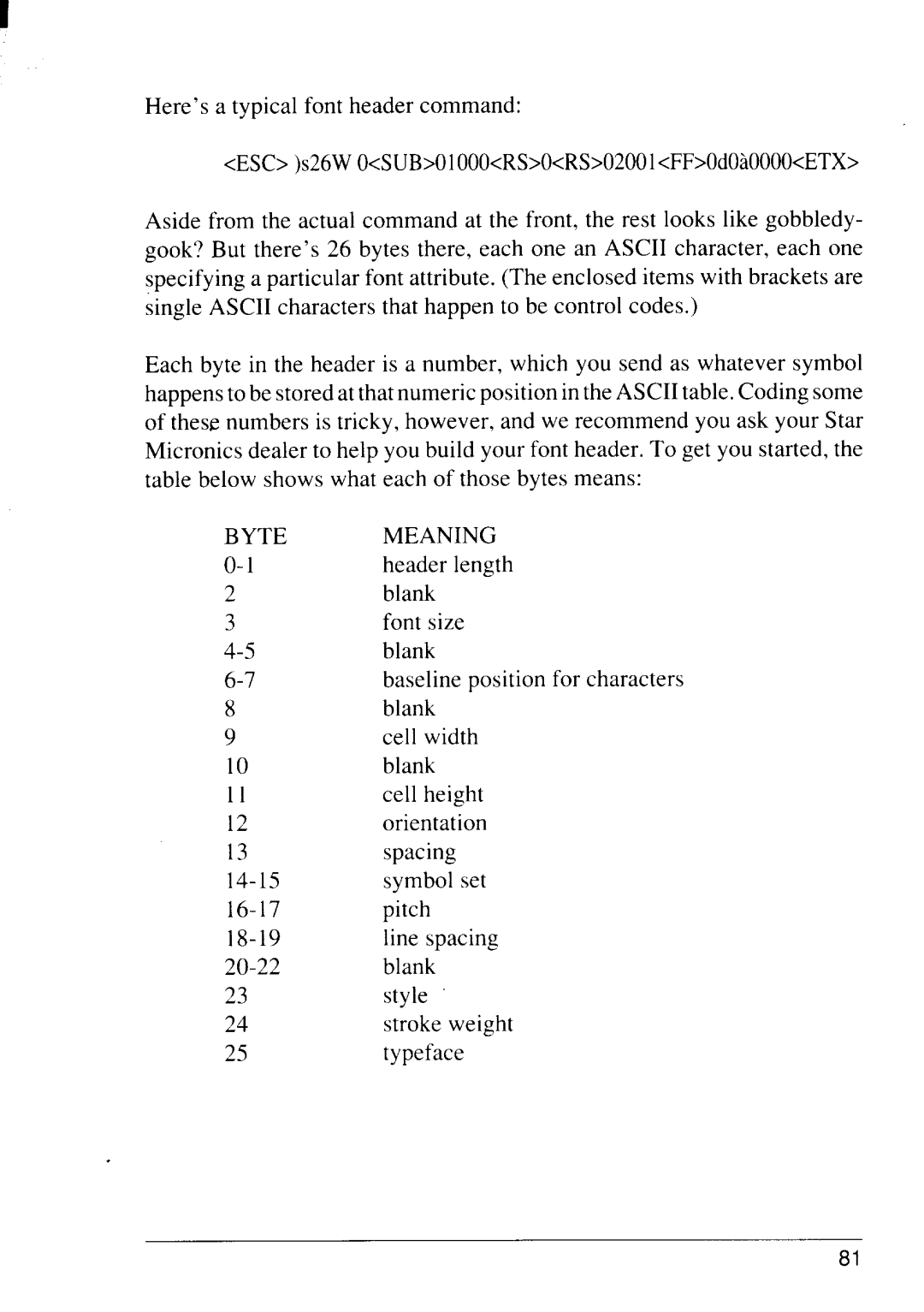
Here’s a typical font header command:
<ESC>)s26WO<SUB>OIOOO<RS>O<RS>O2OOl<FF>OdOaOOOO<ETX>
Aside from the actual command at the front, the rest looks like gobbledy- gook? But there’s 26 bytes there, each one an ASCII character, each one specifying a particular font attribute. (The enclosed items with brackets are single ASCII characters that happen to be control codes.)
Each byte in the header is a number, which you send as whatever symbol happens to be stored at that numeric position in the ASCII table. Coding some of these numbers is tricky, however, and we recommend you ask your Star Micronics dealer to help you build your font header. To get you started, the table below shows what each of those bytes means:
BYTE | MEANING |
|
o | header length - | 1 |
2 | blank |
|
3 | font size |
|
blank |
| |
baseline position for characters |
| |
8 | blank |
|
9 | cell width |
|
10 | blank |
|
11 | cell height |
|
12 | orientation |
|
13 | spacing |
|
symbol set |
| |
pitch |
| |
line spacing |
| |
blank |
| |
23 | style |
|
24 | stroke weight |
|
25 | typeface |
|
81
